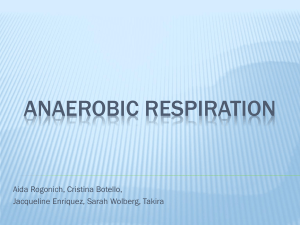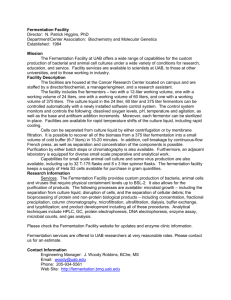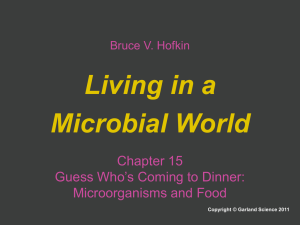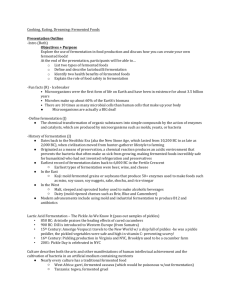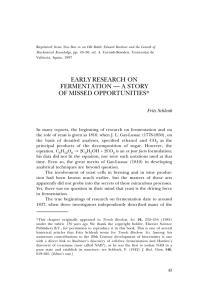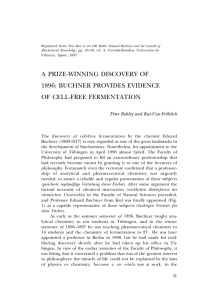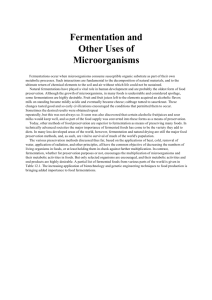Full Article-PDF
advertisement
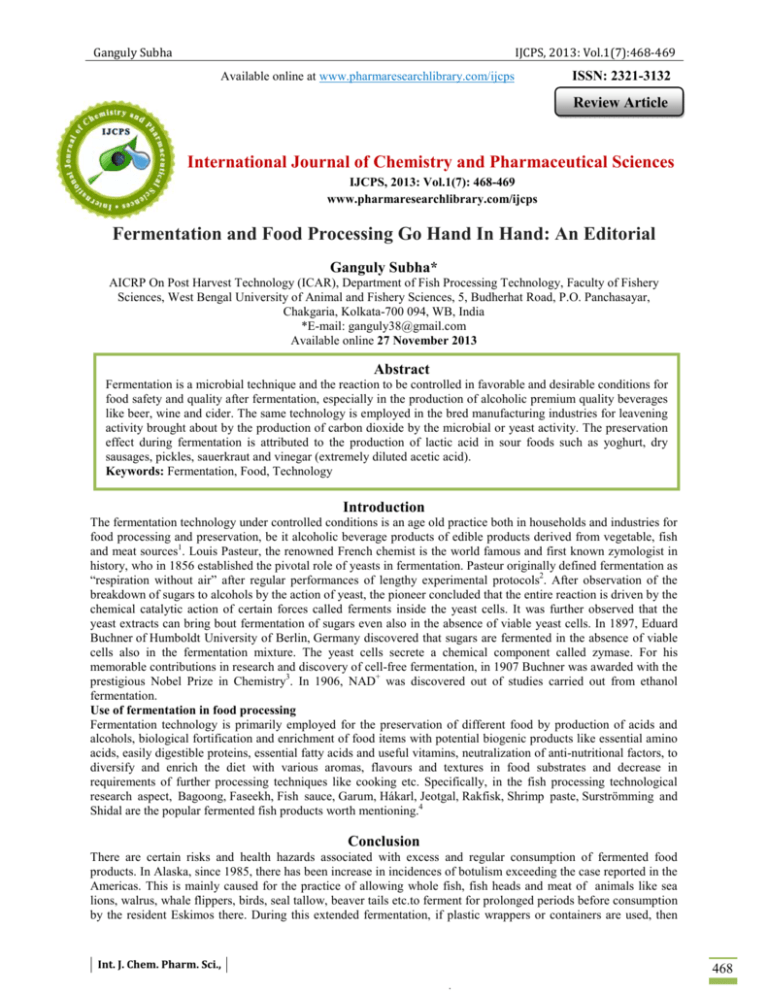
Ganguly Subha IJCPS, 2013: Vol.1(7):468-469 Available online at www.pharmaresearchlibrary.com/ijcps ISSN: 2321-3132 Review Article International Journal of Chemistry and Pharmaceutical Sciences IJCPS, 2013: Vol.1(7): 468-469 www.pharmaresearchlibrary.com/ijcps Fermentation and Food Processing Go Hand In Hand: An Editorial Ganguly Subha* AICRP On Post Harvest Technology (ICAR), Department of Fish Processing Technology, Faculty of Fishery Sciences, West Bengal University of Animal and Fishery Sciences, 5, Budherhat Road, P.O. Panchasayar, Chakgaria, Kolkata-700 094, WB, India *E-mail: ganguly38@gmail.com Available online 27 November 2013 Abstract Fermentation is a microbial technique and the reaction to be controlled in favorable and desirable conditions for food safety and quality after fermentation, especially in the production of alcoholic premium quality beverages like beer, wine and cider. The same technology is employed in the bred manufacturing industries for leavening activity brought about by the production of carbon dioxide by the microbial or yeast activity. The preservation effect during fermentation is attributed to the production of lactic acid in sour foods such as yoghurt, dry sausages, pickles, sauerkraut and vinegar (extremely diluted acetic acid). Keywords: Fermentation, Food, Technology Introduction The fermentation technology under controlled conditions is an age old practice both in households and industries for food processing and preservation, be it alcoholic beverage products of edible products derived from vegetable, fish and meat sources1. Louis Pasteur, the renowned French chemist is the world famous and first known zymologist in history, who in 1856 established the pivotal role of yeasts in fermentation. Pasteur originally defined fermentation as “respiration without air” after regular performances of lengthy experimental protocols2. After observation of the breakdown of sugars to alcohols by the action of yeast, the pioneer concluded that the entire reaction is driven by the chemical catalytic action of certain forces called ferments inside the yeast cells. It was further observed that the yeast extracts can bring bout fermentation of sugars even also in the absence of viable yeast cells. In 1897, Eduard Buchner of Humboldt University of Berlin, Germany discovered that sugars are fermented in the absence of viable cells also in the fermentation mixture. The yeast cells secrete a chemical component called zymase. For his memorable contributions in research and discovery of cell-free fermentation, in 1907 Buchner was awarded with the prestigious Nobel Prize in Chemistry3. In 1906, NAD+ was discovered out of studies carried out from ethanol fermentation. Use of fermentation in food processing Fermentation technology is primarily employed for the preservation of different food by production of acids and alcohols, biological fortification and enrichment of food items with potential biogenic products like essential amino acids, easily digestible proteins, essential fatty acids and useful vitamins, neutralization of anti-nutritional factors, to diversify and enrich the diet with various aromas, flavours and textures in food substrates and decrease in requirements of further processing techniques like cooking etc. Specifically, in the fish processing technological research aspect, Bagoong, Faseekh, Fish sauce, Garum, Hákarl, Jeotgal, Rakfisk, Shrimp paste, Surströmming and Shidal are the popular fermented fish products worth mentioning.4 Conclusion There are certain risks and health hazards associated with excess and regular consumption of fermented food products. In Alaska, since 1985, there has been increase in incidences of botulism exceeding the case reported in the Americas. This is mainly caused for the practice of allowing whole fish, fish heads and meat of animals like sea lions, walrus, whale flippers, birds, seal tallow, beaver tails etc.to ferment for prolonged periods before consumption by the resident Eskimos there. During this extended fermentation, if plastic wrappers or containers are used, then Int. J. Chem. Pharm. Sci., 468 Ganguly Subha IJCPS, 2013: Vol.1(7):468-469 Clostridium botulinum gets a conducive condition to thrive in the micro-aerophilic condition inside the plastic containers. References 1. 2. 3. 4. K.H. Steinkraus, Ed.. Handbook of Indigenous Fermented Foods. 1995;NY, Marcel Dekker, Inc.. J. Dubos. Louis Pasteur: Free Lance of Science, Gollancz. In: K.L. Manchester. Louis Pasteur (1822– 1895)--chance and the prepared mind. Trends Biotechnol. 1995;13 (12): 511–15. Nobel Laureate Biography of Eduard Buchner at http://nobelprize.org, The Nobel Prize in Chemistry, 1929 Ganguly, S. Food Processing Technology. AV Akademikerverlag GmbH & Co. KG, Saarbrücken, Germany with trademark LAP LAMBERT Academic Publishing, 2012;ISBN 978-3-8383-8653-9. Int. J. Chem. Pharm. Sci., 469




